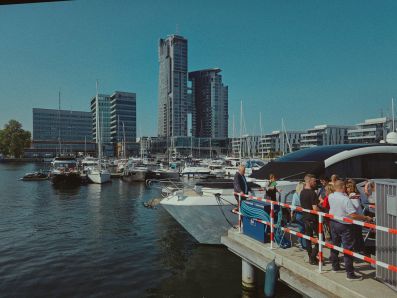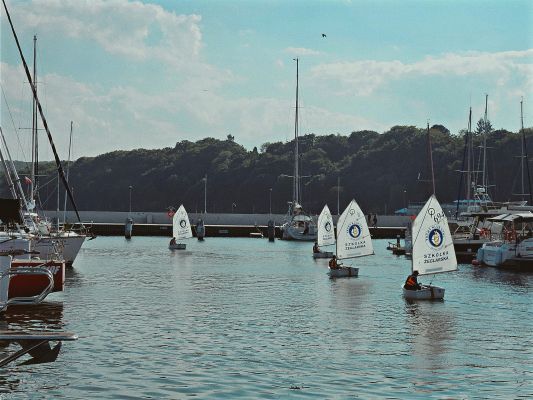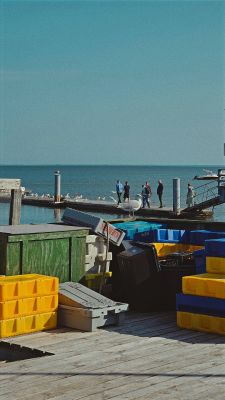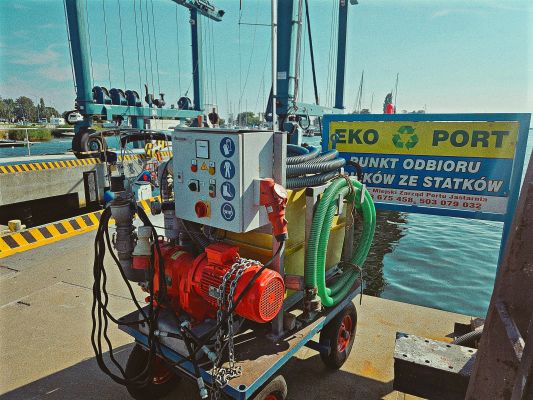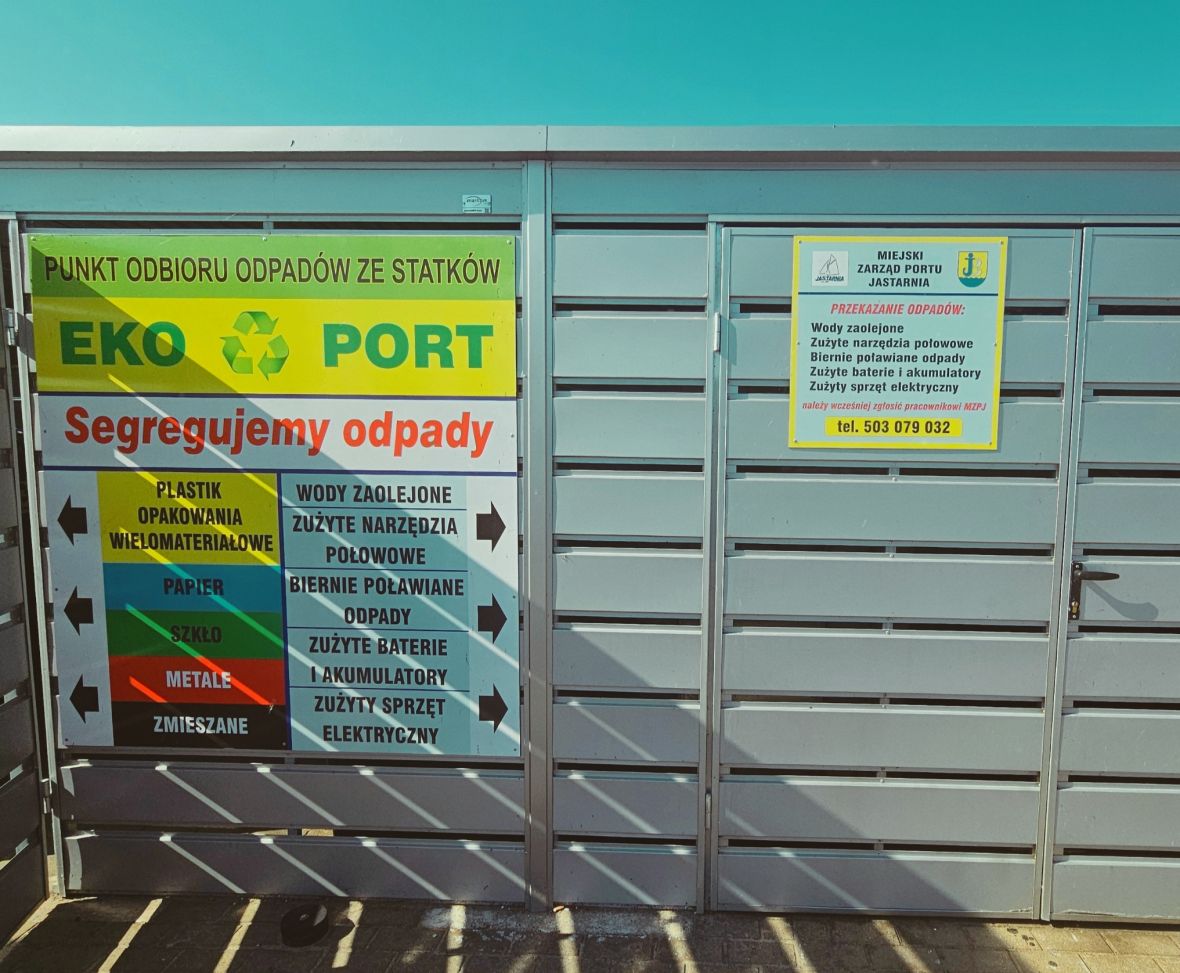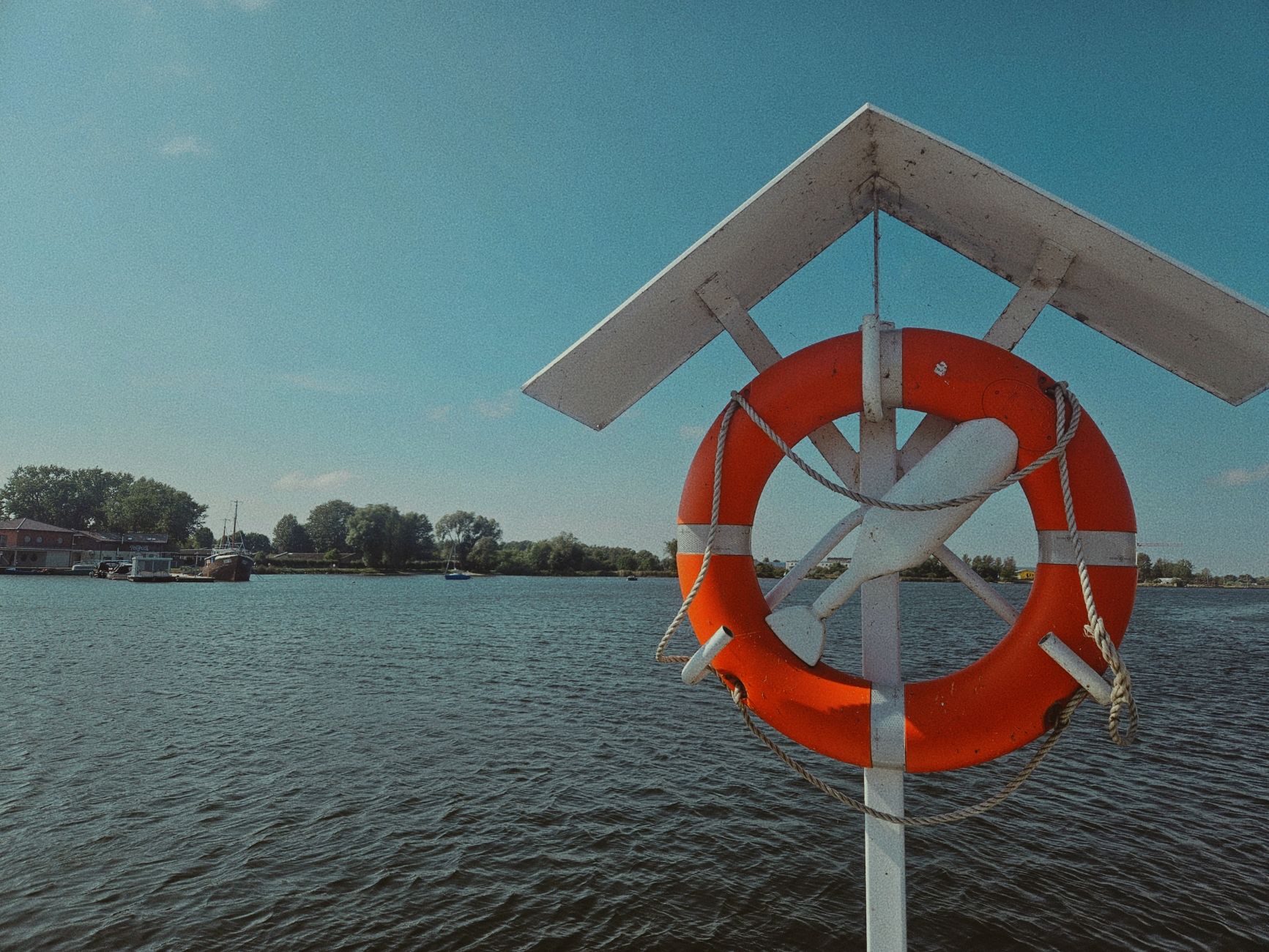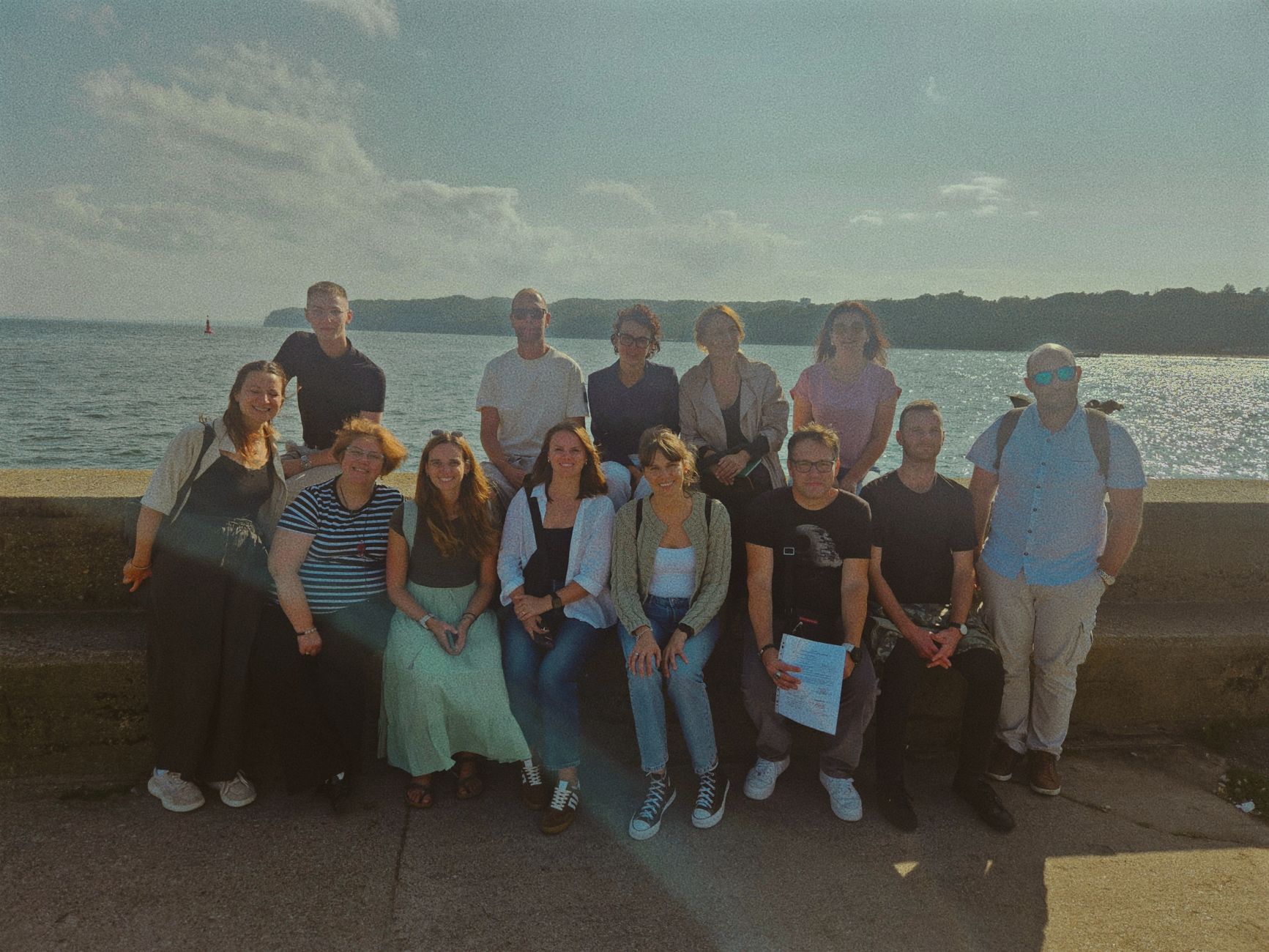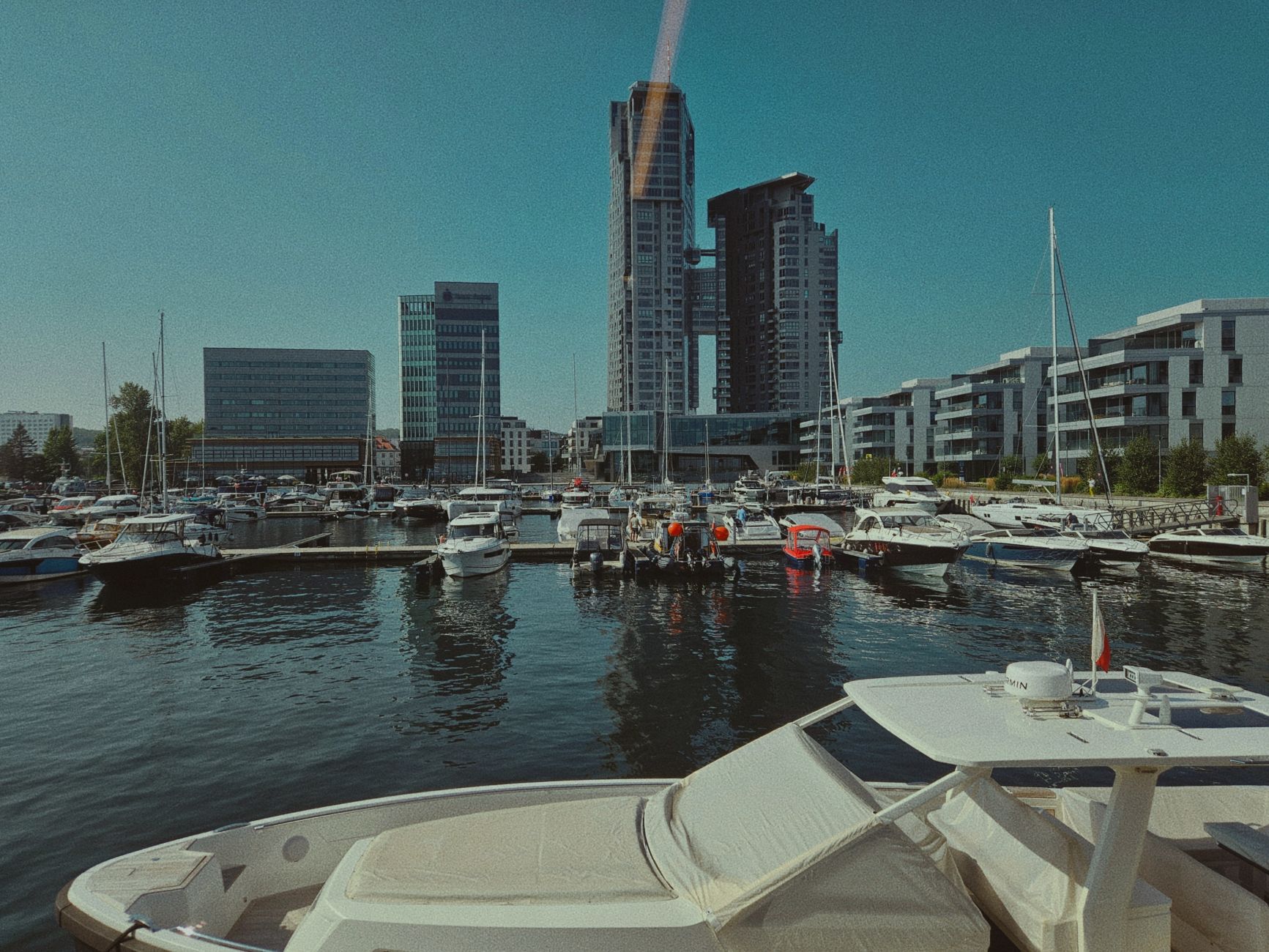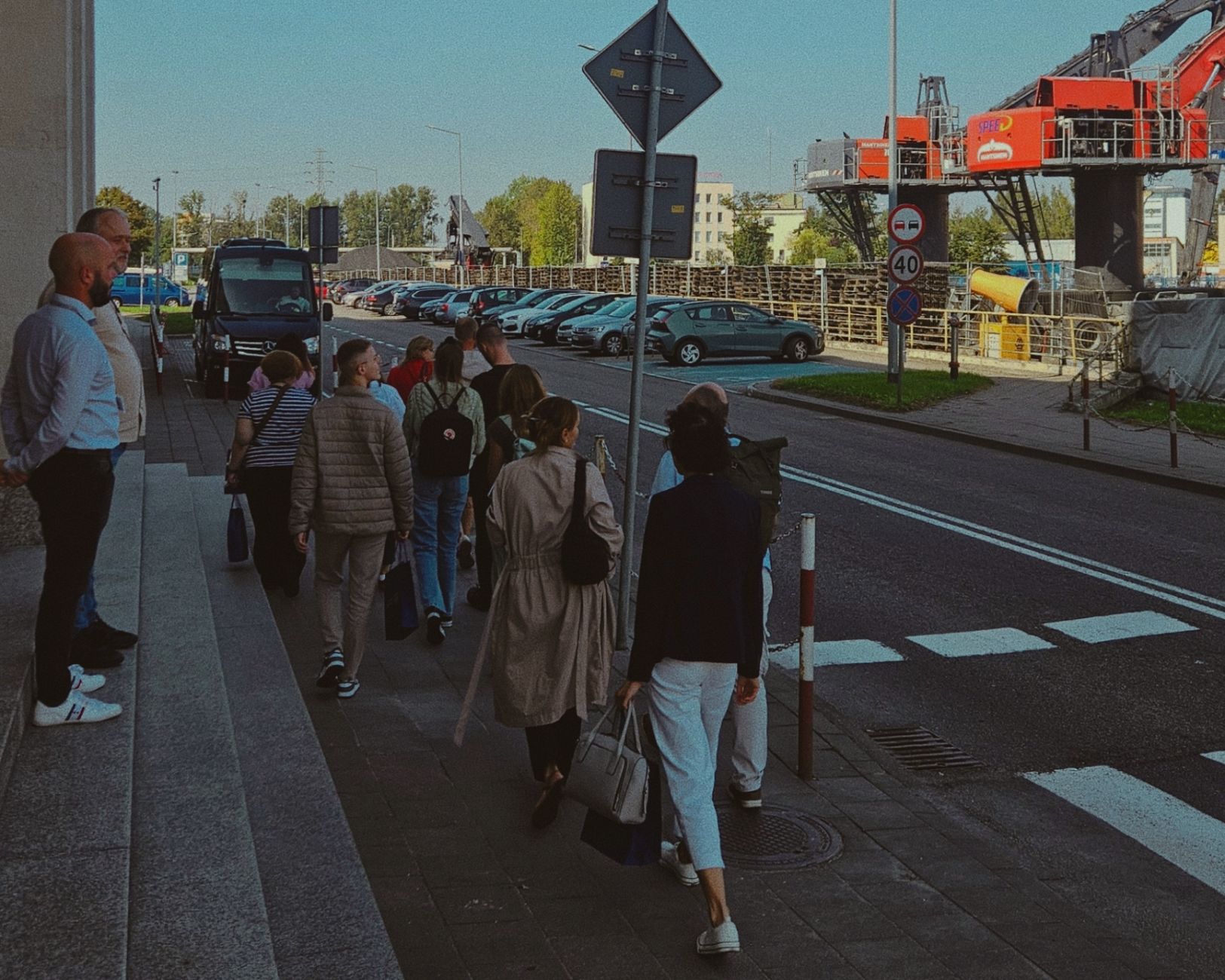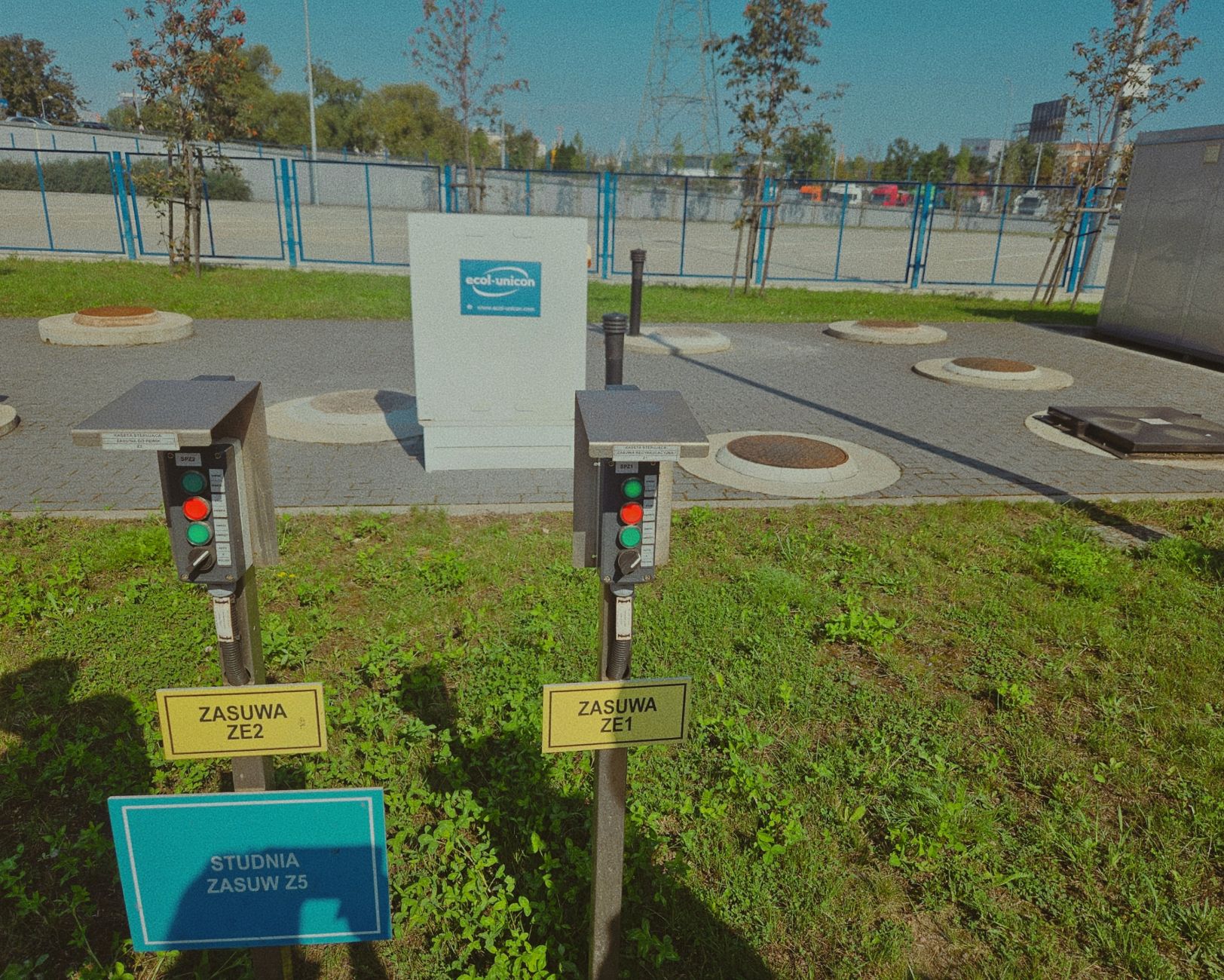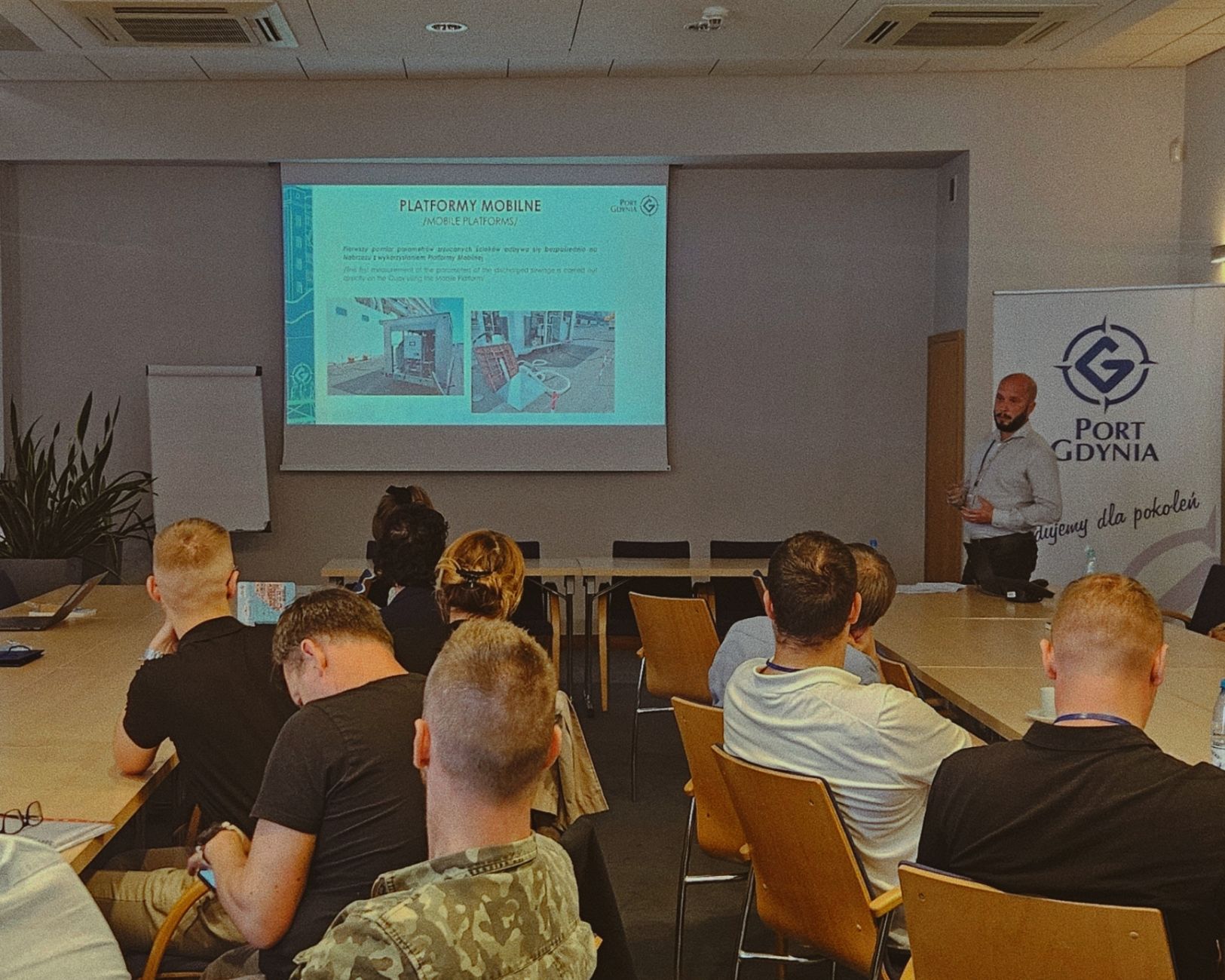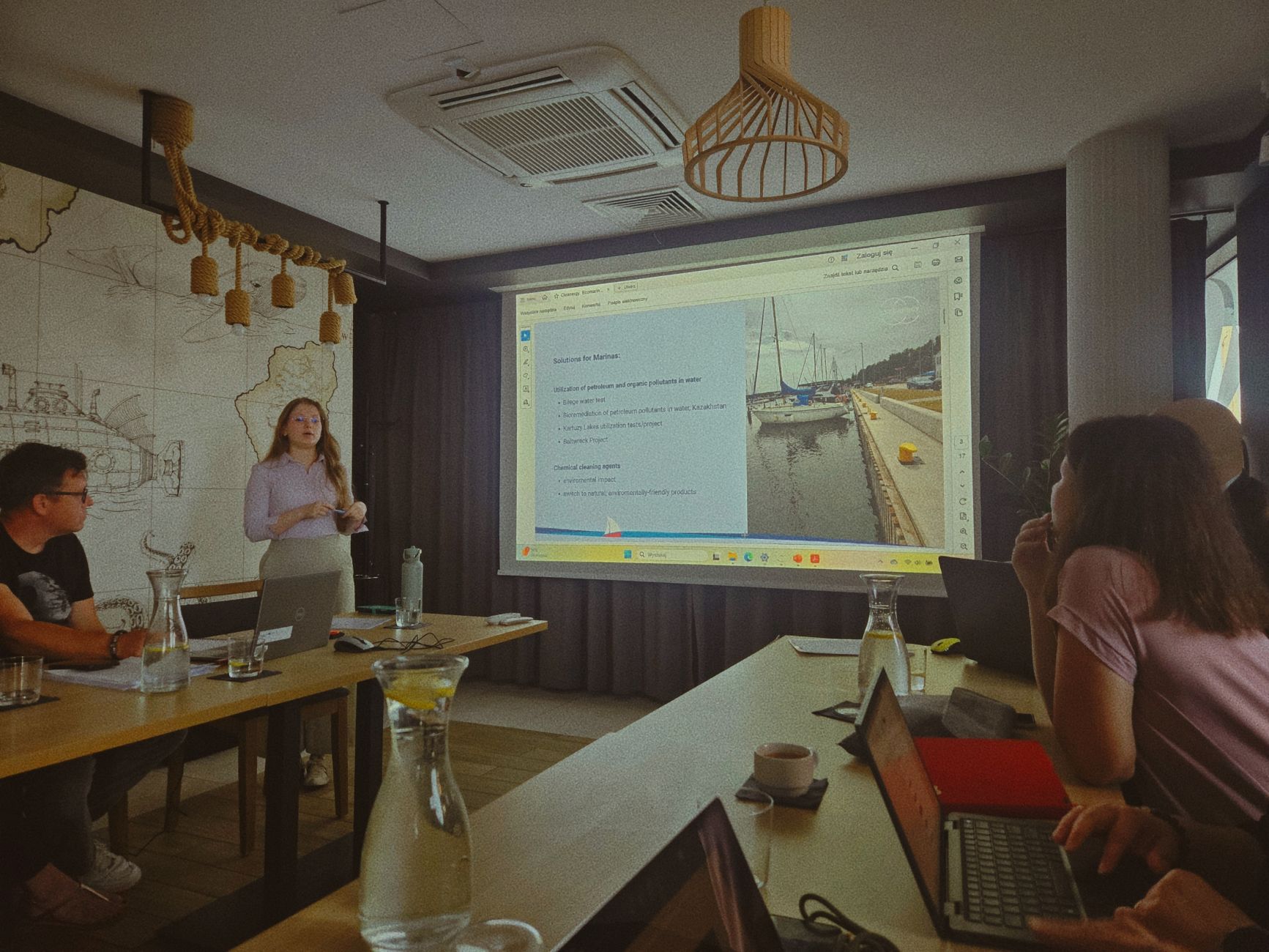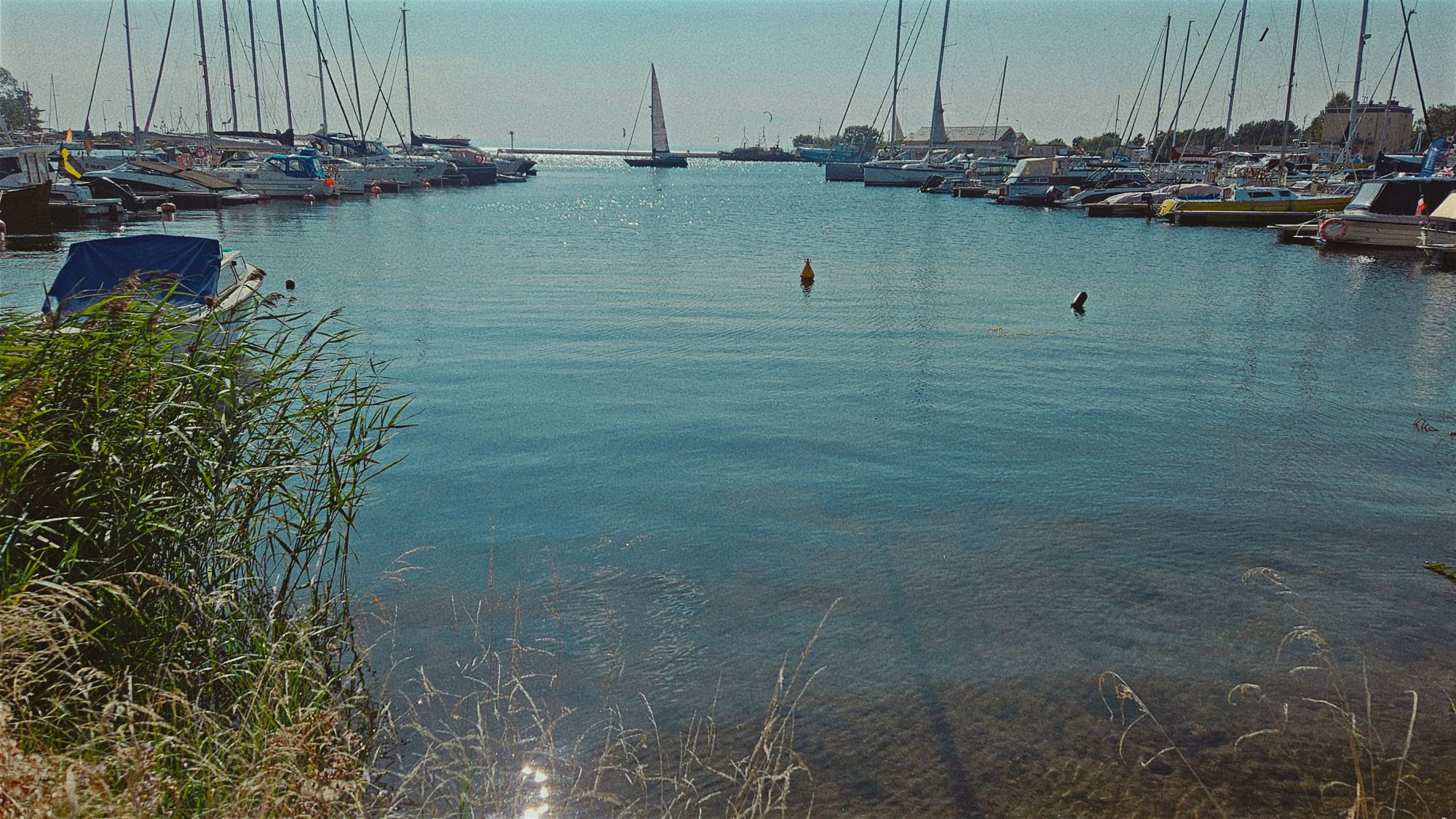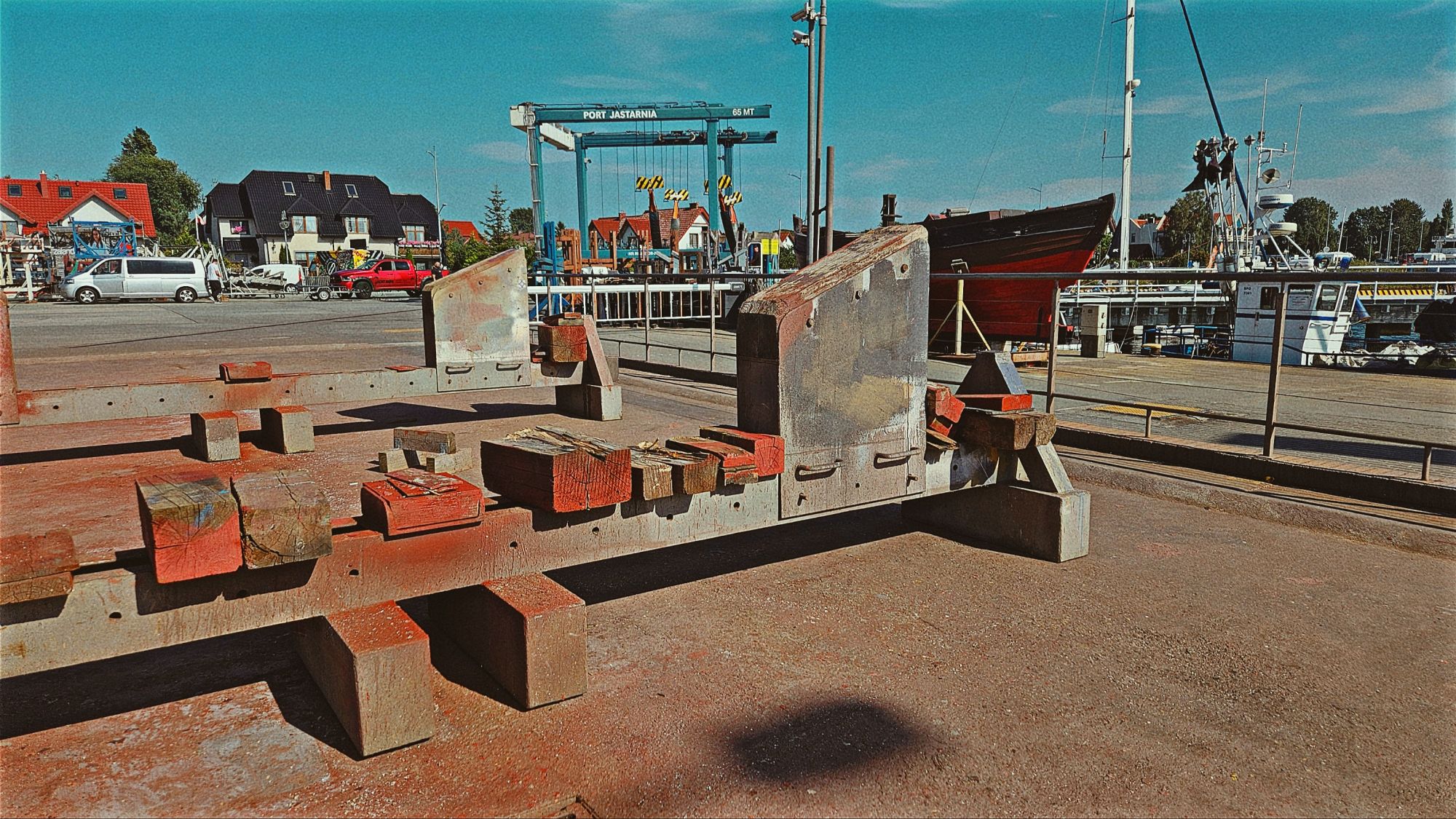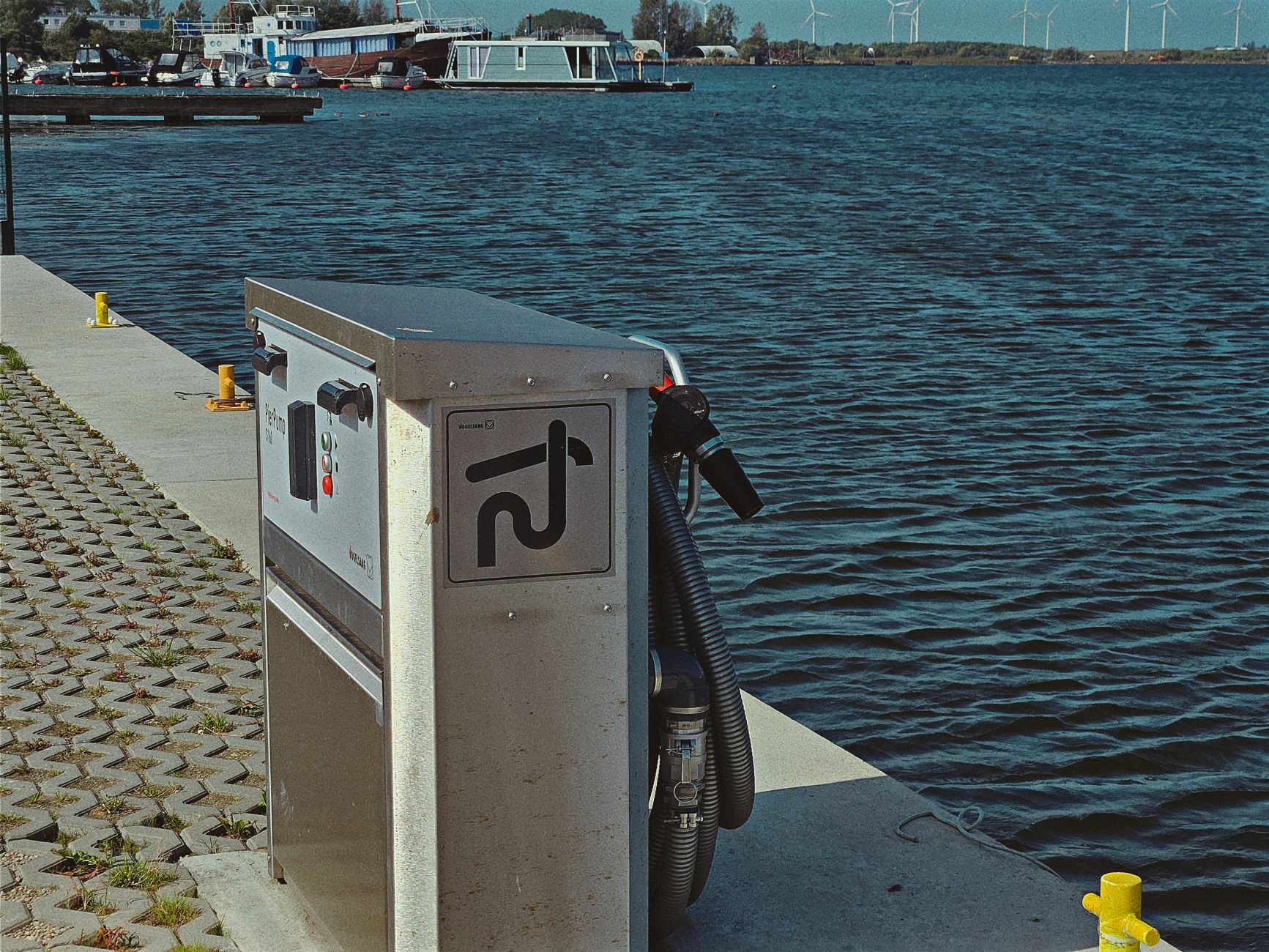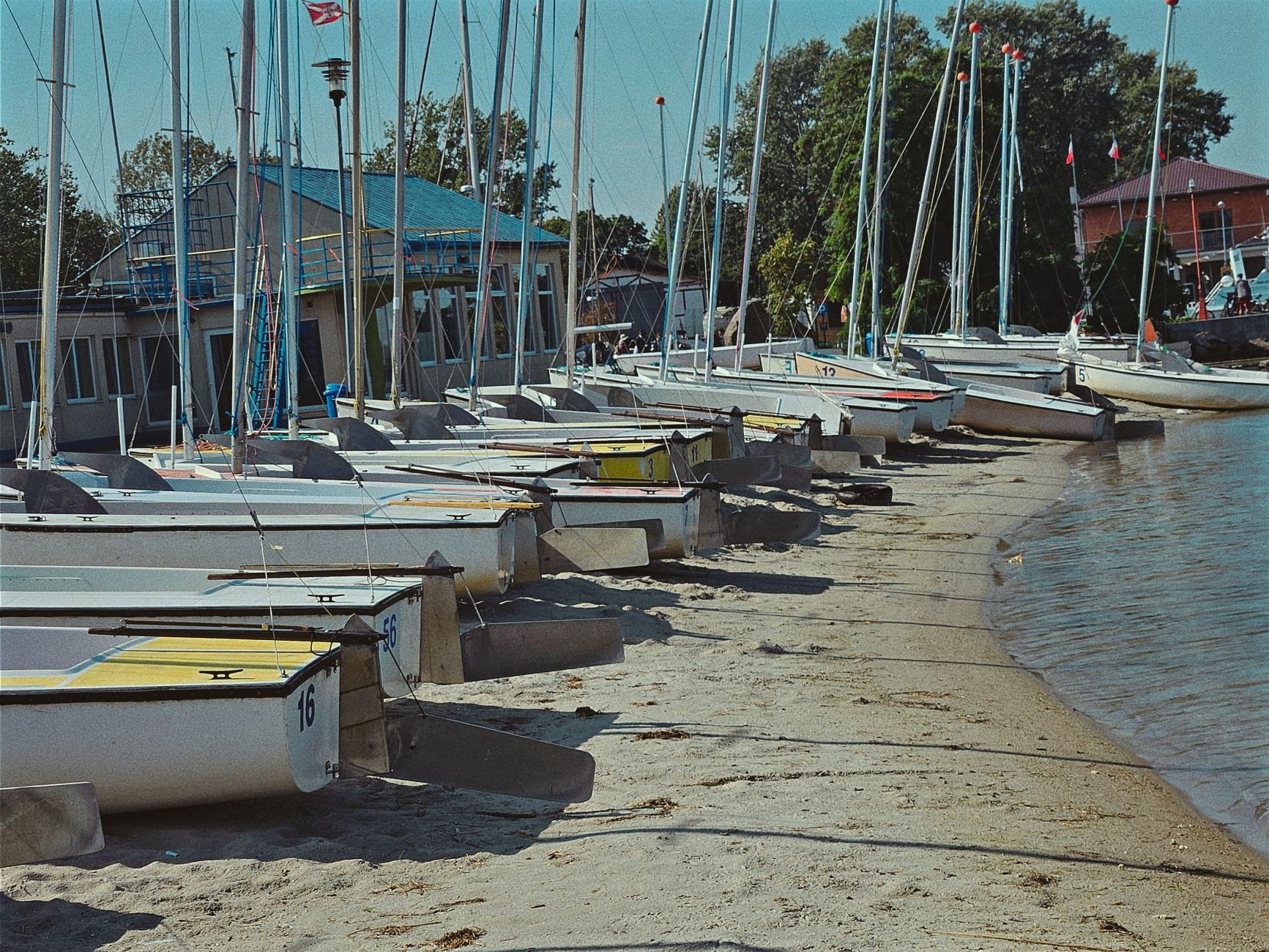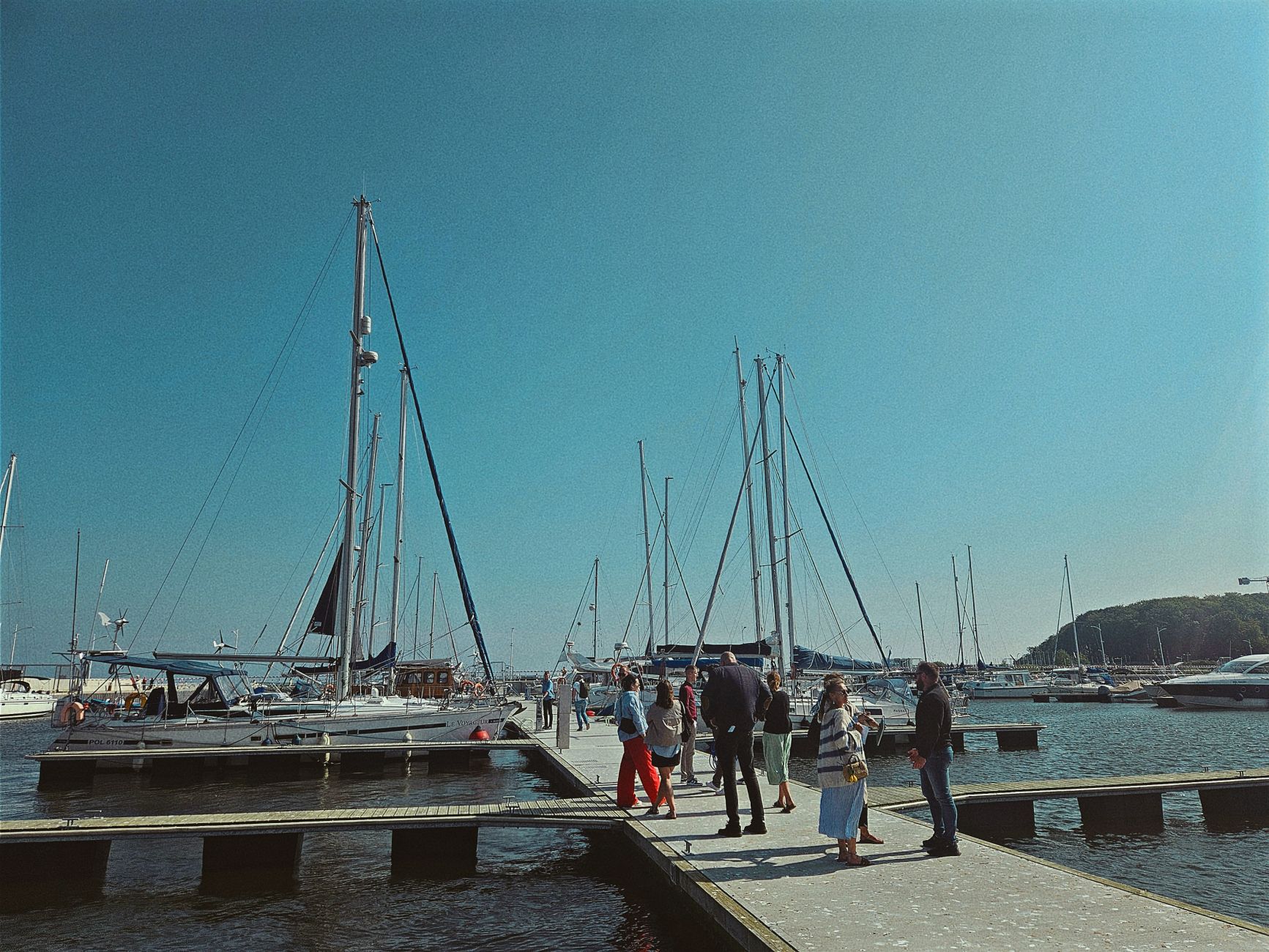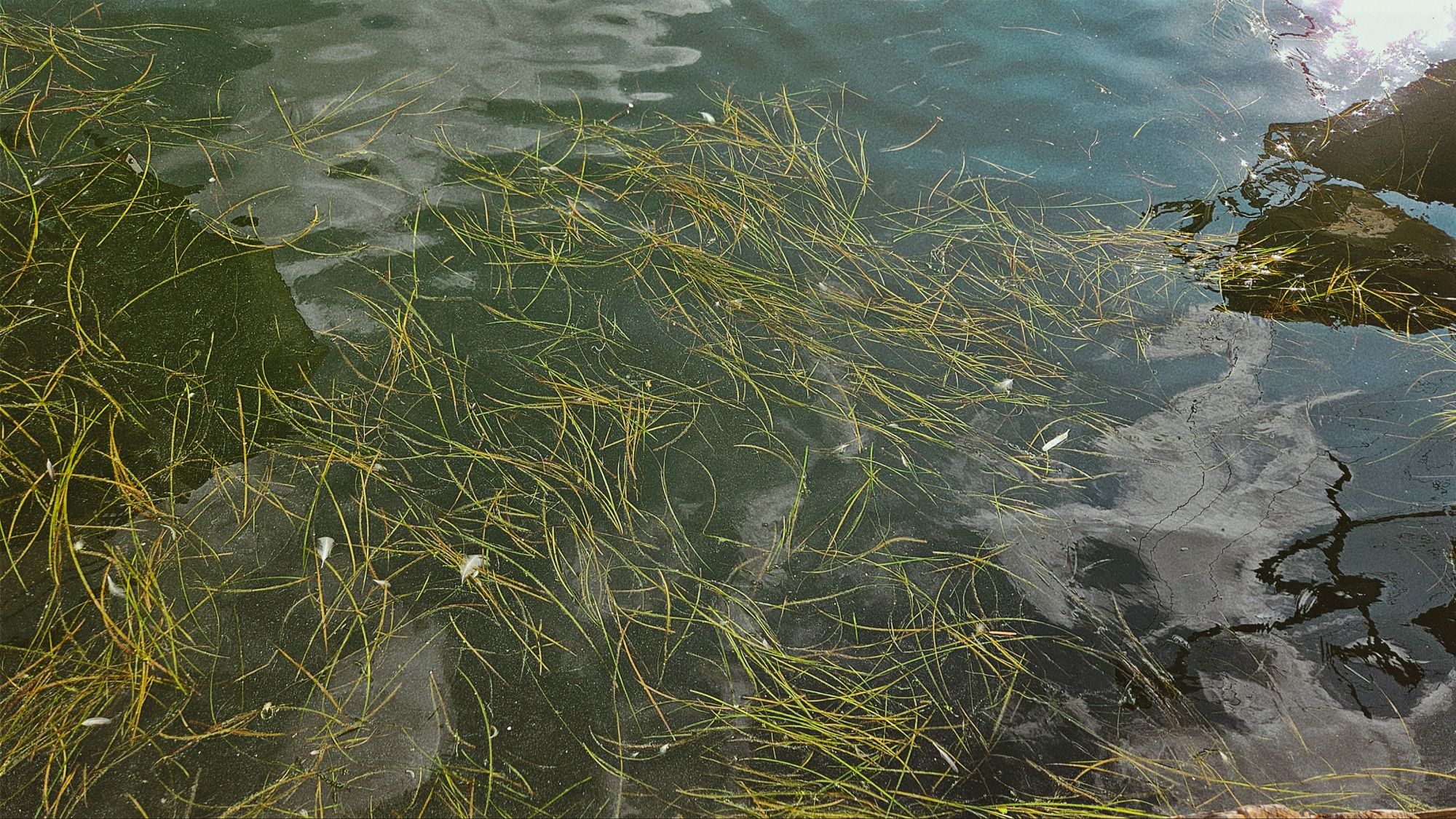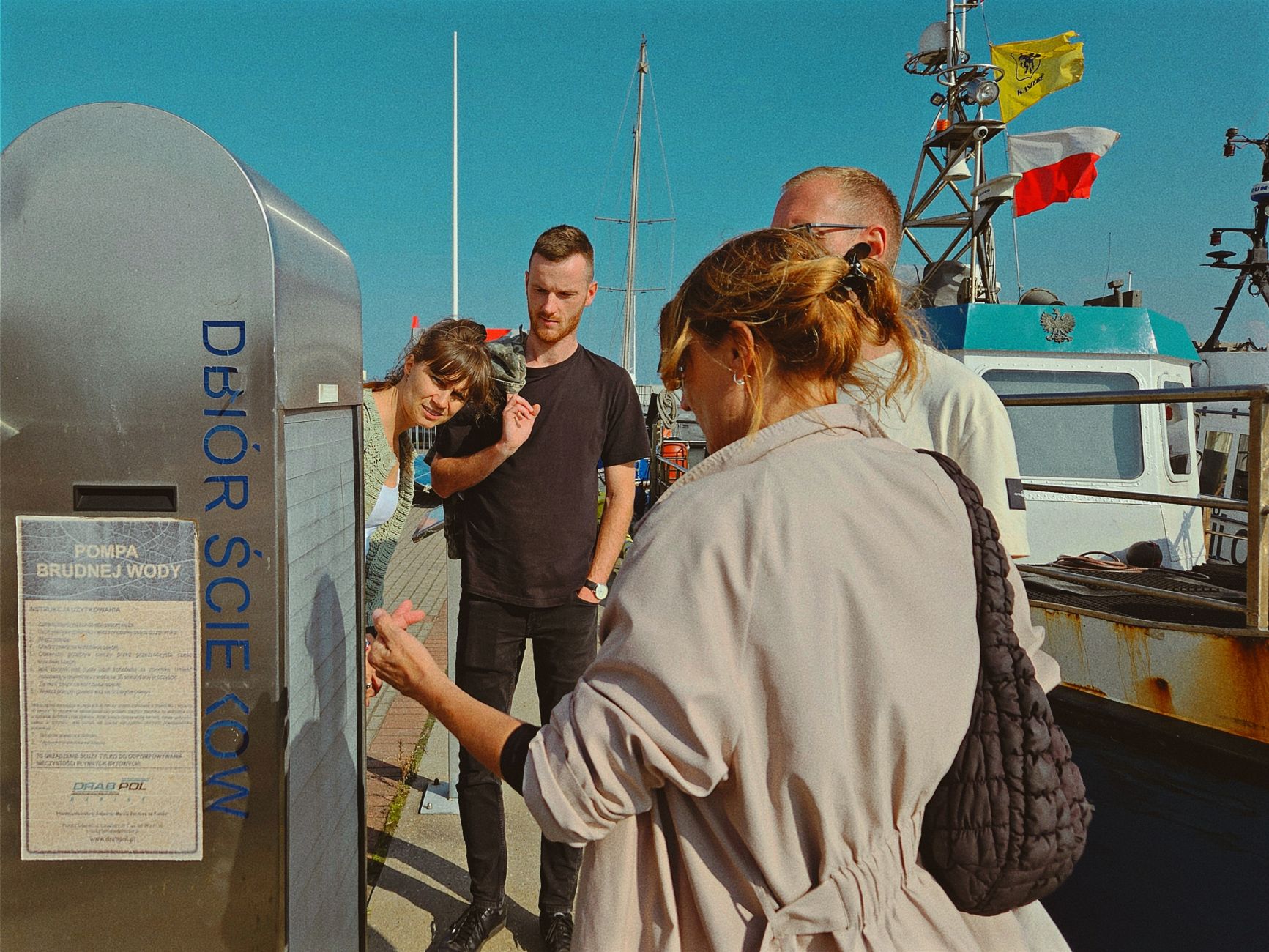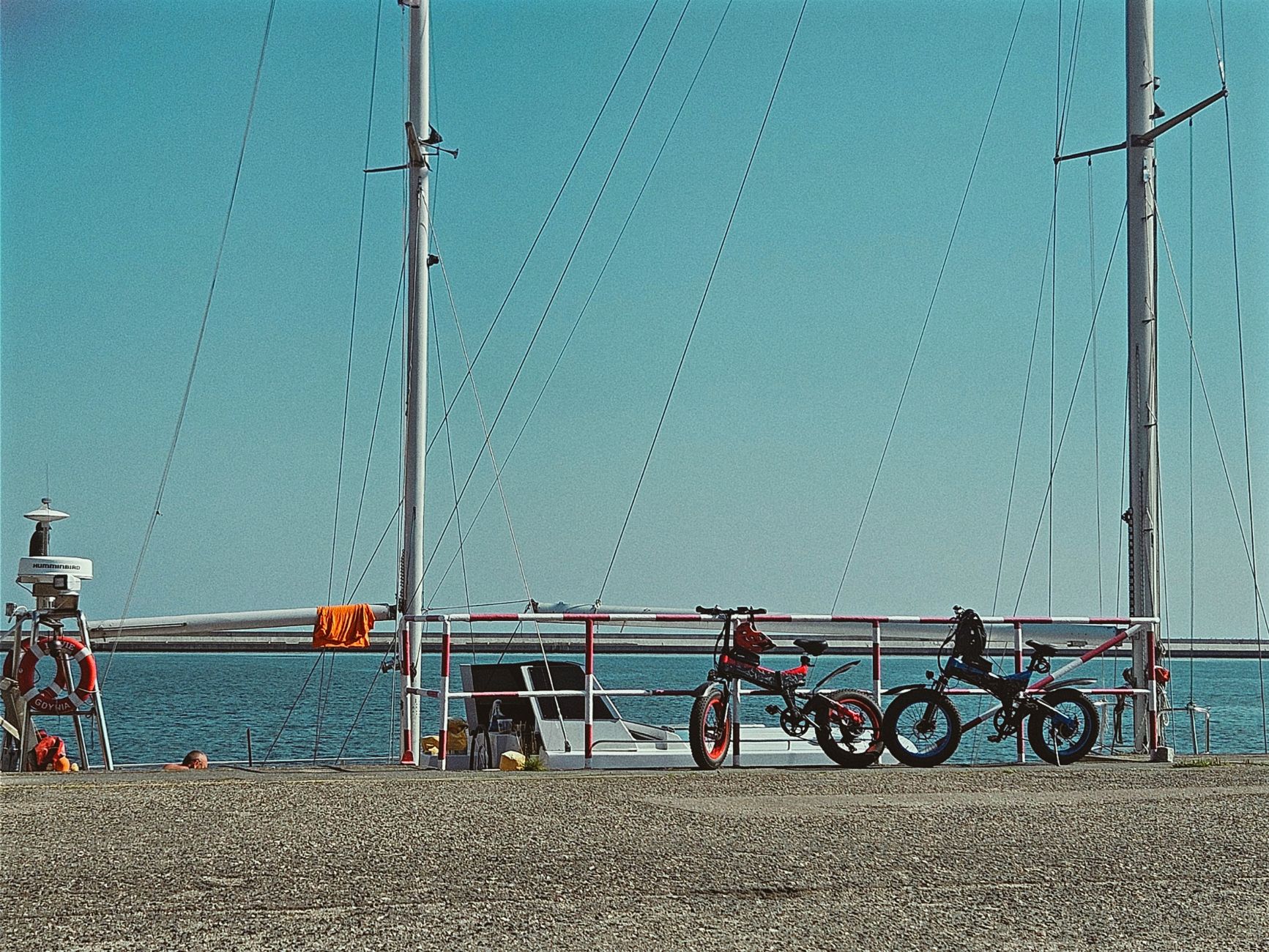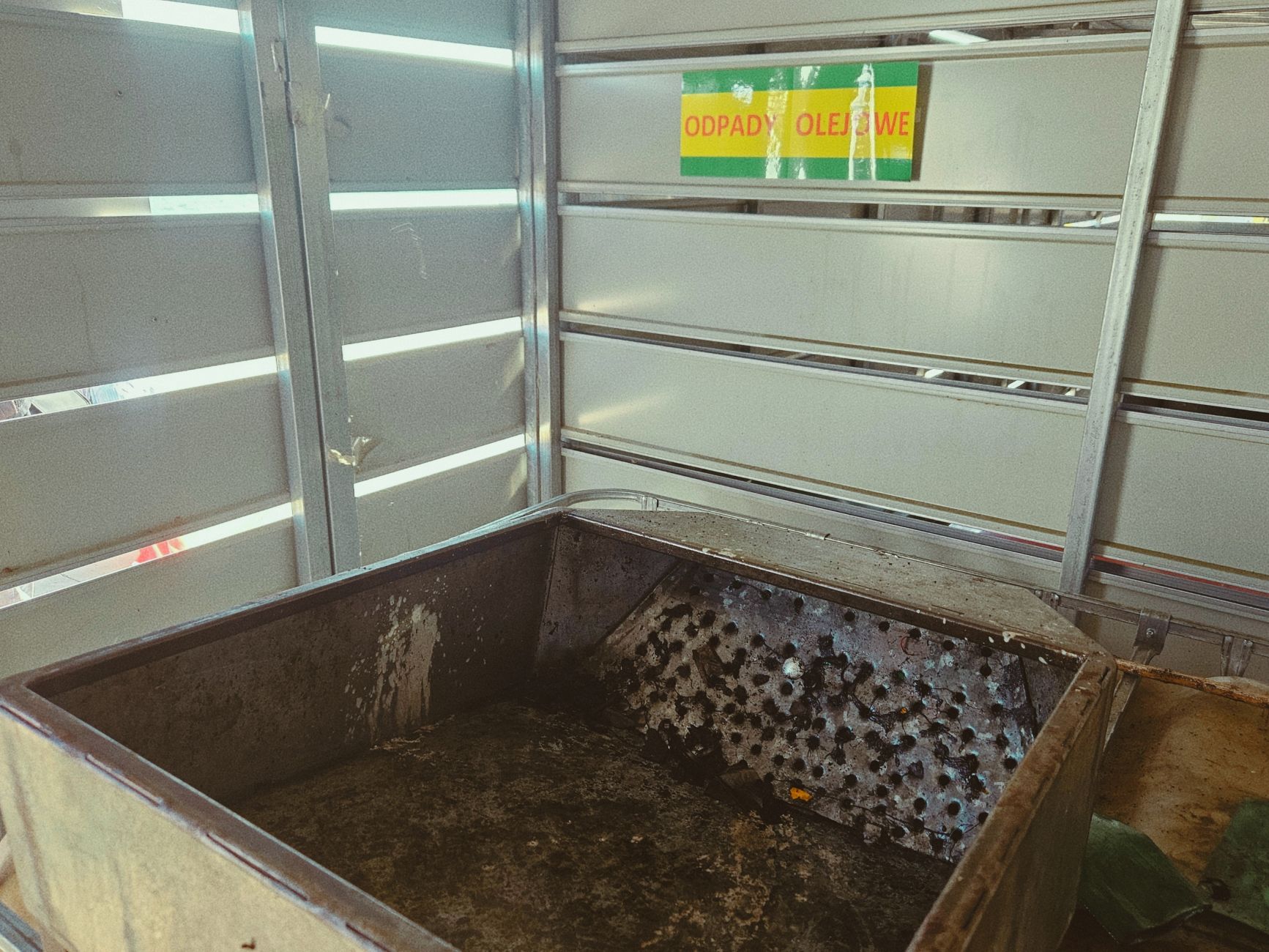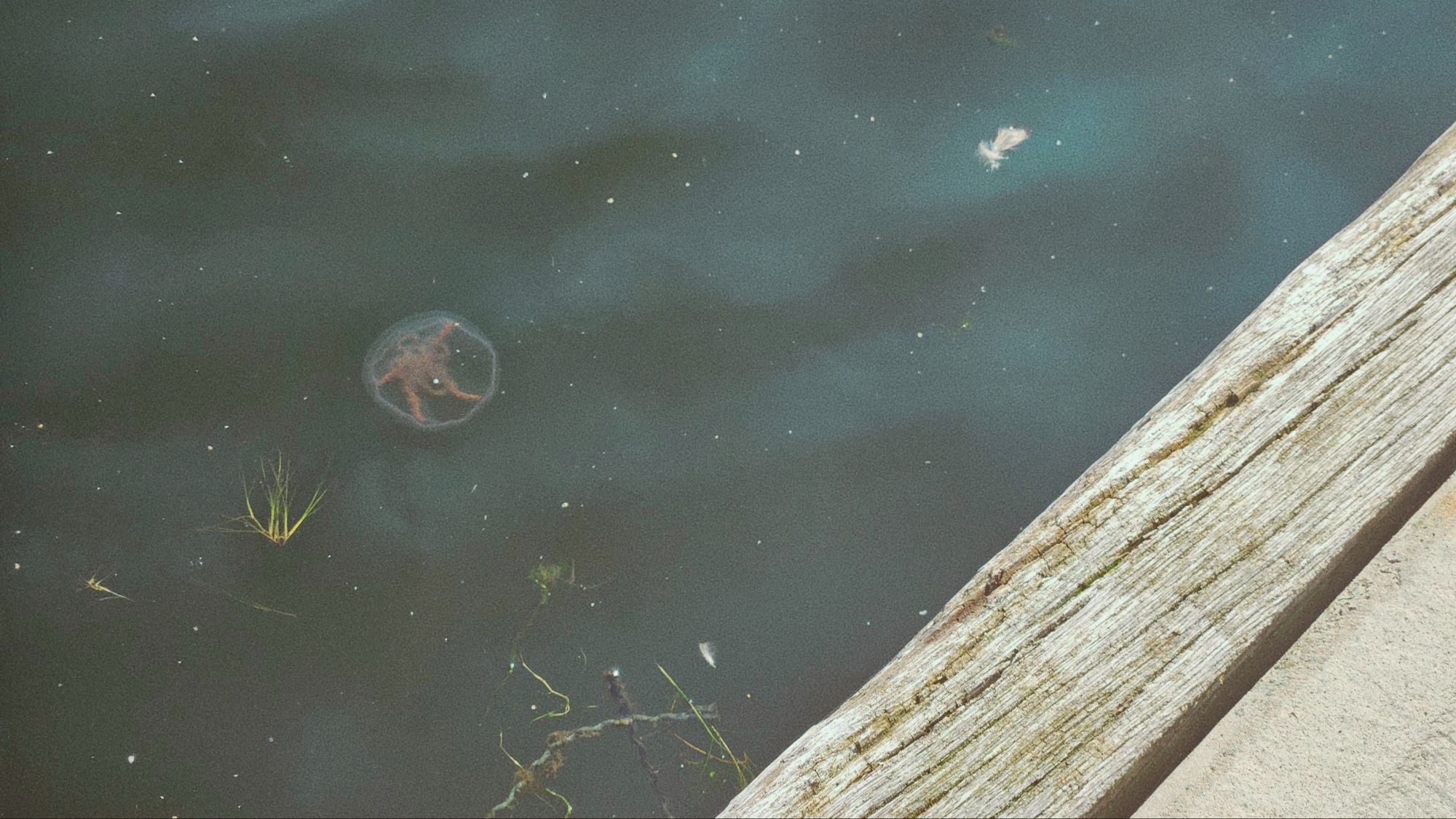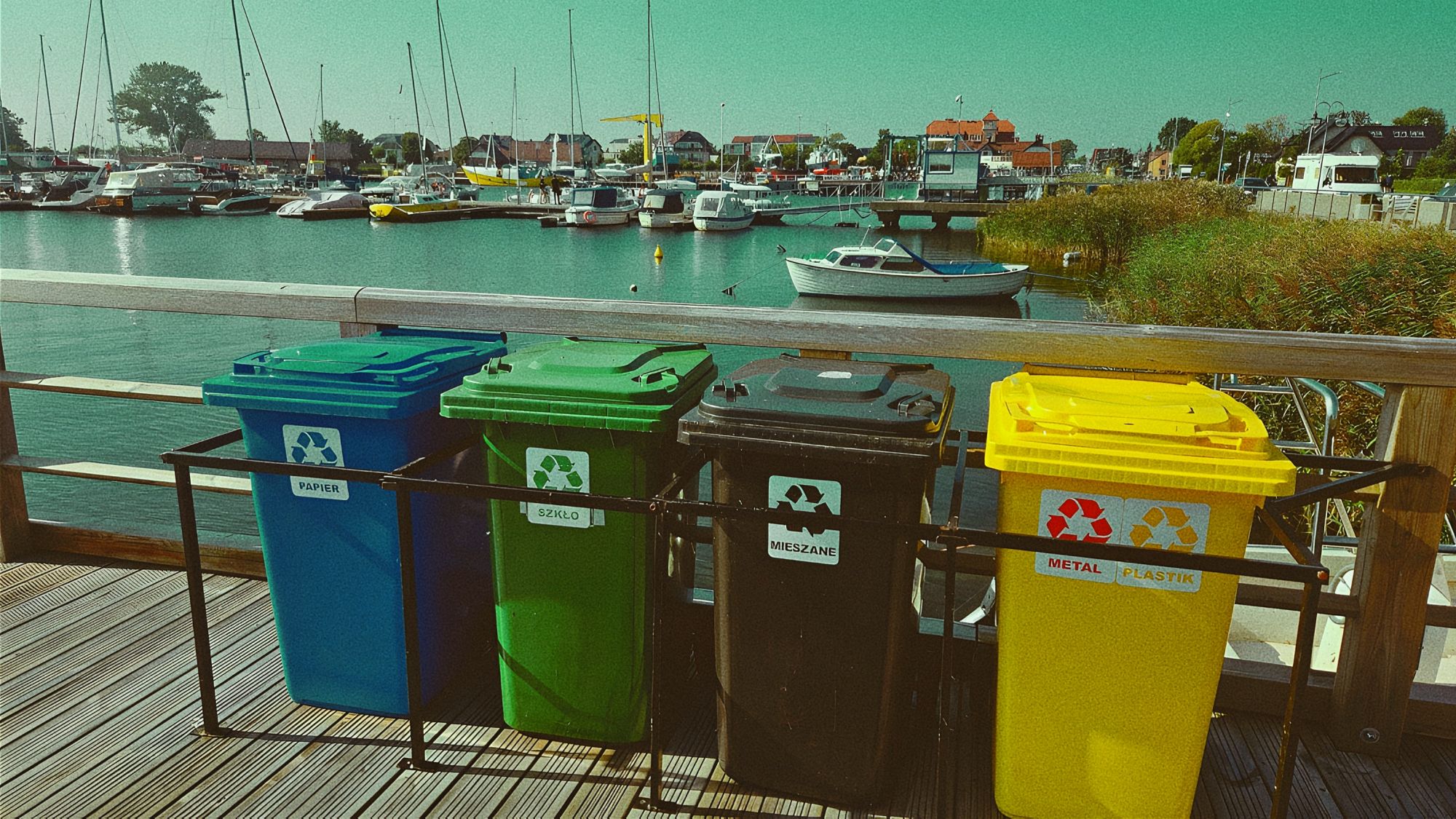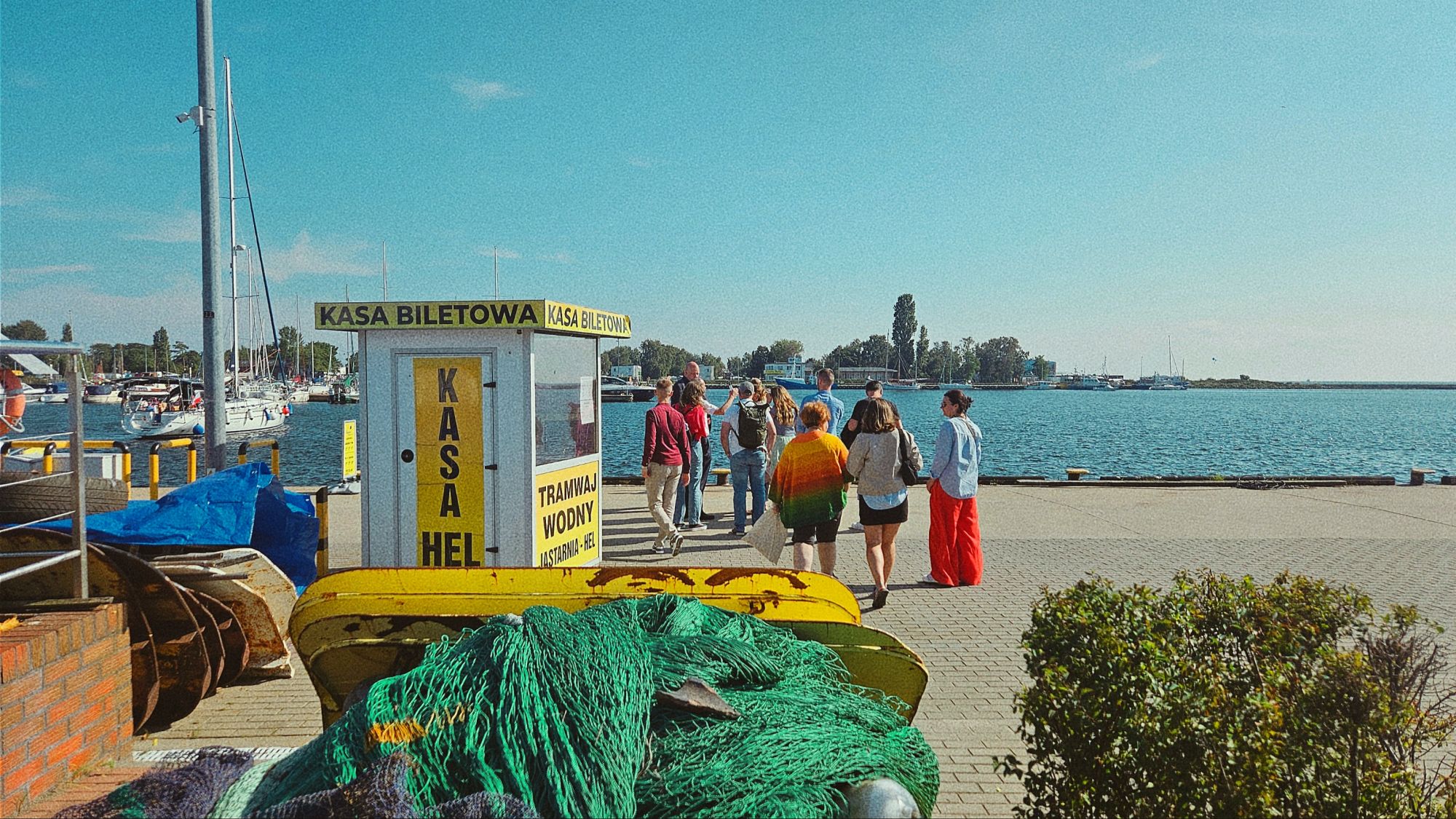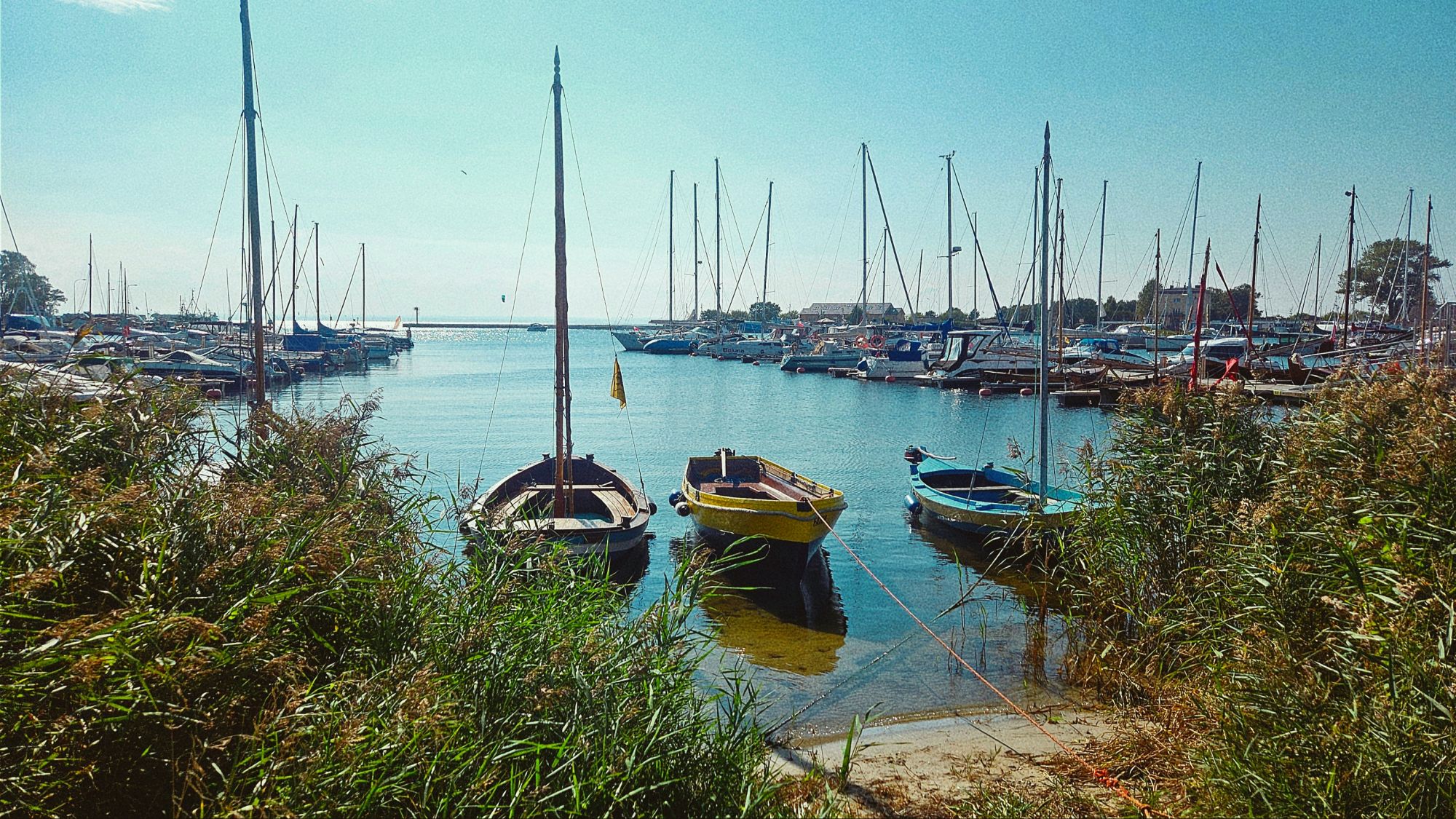ECOMARINAS. From Rewa to Jastarnia - Following the Trail of Clean Marinas
Gdańsk/Rewa, September 9-10, 2025—two days, four ports, and three marinas—the ECOMARINAS project team took part in another study visit, this time touring the ports and marinas of the Bay of Gdańsk, from Rewa through the Port of Gdynia and two marinas in Gdynia, to Puck and Jastarnia. The goal was to familiarize themselves with local infrastructure and identify solutions that will significantly reduce discharges and pollution in port waters and help sailors make eco-friendly decision while on the water. The study visit program included a tour of the wastewater treatment plant at the Port of Gdynia, and an overview of the environmental infrastructure in the marinas.
Can microorganisms break down oil-based pollutants?
The first day of the study visit began with a presentation by representatives of Cleanergy company on the biological decomposition of oil-based and organic pollutants using bacteria and biosurfactants. The presentation emphasized the usefulness of these solutions in marinas, including the possibility of dosing biocleaners into waters and installations, limiting the use of chemical cleaning agents, as well as introduction of automatic dispensers and devices for dosing bioactive agents on quays (self-service solutions, reducing the risk of spills and overdoses). Cleanergy also presented the results of an experiment conducted on Lake Kartuzy – a pilot project demonstrating that bioremediation can reduce hydrocarbon loads and pollution indicators in still waters, assuming appropriate dosing and effect control.
Gdynia – a city of modern infrastructural solutions for the Baltic Sea
At the Port of Gdynia, the project delegation visited the mechanical-chemical treatment plant. The port's infrastructure demonstrates that efficient port reception facilities (PRFs) and refined collection logistics determine whether waste ends up in the installations or… in the worst-case scenario, in the water.
The Port of Gdynia is following its "Strategic Development Plan to 2027" in which logistics investments go hand in hand with environmental and safety components. At the same time, the port conducts environmental monitoring (water, sediments), has defined emergency procedures, and maintains a plan to combat threats such as oil contamination, noise, and waste. Port of Gdynia is also participating in the LIMIT project (cofinanced from Interreg South Baltic) with an aim of developing innovative concepts for the removal of PFAS and other critical micropollutants.
During the study tour, two marinas in Gdynia were also visited: Yacht Park and Marina Gdynia. The Gdynia Municipal Marina has a fuel station, a sewage and oil collection system, waste segregation, and water monitoring system. The second marina in Gdynia, Marina Yacht Park, is a new private marina focused on comfortable mooring, equipped with modern sanitary infrastructure and a paid sewage discharge pump.
Rewa and Puck – the cradle of maritime history
Day two of the study visit started with a morning stroll to the marina in Rewa, which revealed the importance of eco solutions on a micro scale. Even the smallest port basin is sensitive to nutrient loads and everyday chemicals. It is these first-contact places, along with sailing schools, that set the standard for environmental culture among sailors.
The port and marina in Puck are also an example of how a small coastal town can combine tourism with historical and ecological functions. The Bay of Puck is particularly sensitive to pollution, so every element of port infrastructure is important for environmental quality. The marina has designated municipal waste collection points and sanitary facilities, and the port authorities take steps to minimize uncontrolled discharges of sewage and bilge water from vessels.
Puck is also an important historical site in the context of our relationship with the sea. It was here on February 10, 1920, that General Józef Haller symbolically threw a ring into the Bay of Puck as part of Poland's wedding to the sea.
Puck is also a location of underwater archaeological sites. In 1977, divers discovered relics of the old port and shipwrecks lying on the seabed a short distance from the shoreline. Comprehensive archaeological and geological research conducted in the following years revealed that a 70 cm rise in sea level since the Viking Age had caused the port to sink and remain submerged beneath layers of sediment, along with the wrecks of several vessels, including the boat known as "Puck 2"—a Slavic longship from the 10th century.
Jastarnia as an example of an eco-port
The final stop on the study visit was the port of Jastarnia, a prime example of how a small port can develop in the spirit of ecology and environmental responsibility for the Baltic Sea. Located in the heart of the Hel Peninsula, during the summer season it handles intense tourist and recreational sailing traffic. The management of the port puts a lot of focus on implementing measures that minimize its impact on the waters of Puck Bay.
The Port of Jastarnia was the first maritime facility of its kind, built during the Second Polish Republic between 1926 and 1931 based on to the design of Józef Poznański. The quays, constructed of wooden piles, survived until the mid-1970s.
Currently, the port has infrastructure for collecting sanitary sewage and bilge water (a mobile pump with clear markings and easy access), which reduces the risk of illegal discharges into the water. The port is equipped with repair facilities for vessels, a dedicated hull cleaning station with sediment capture, and five repair bays equipped electricity and water stations. There is also a dedicated selective waste collection area – including fishing gear, hazardous waste, and oils. Thanks to these solutions, Jastarnia is an excellent example of an eco-port, a place where water tourism coexists with concern for the cleanliness and biodiversity of the Baltic Sea. Simple tools – such as easily accessible discharge points and mobile collection systems – make a real difference in improving the quality of the aquatic environment.
Why are we implementing the ECOMARINAS project?
Scientific models and reviews indicate that recreational boating has a cumulative impact near marinas and bays, with pressure intensifying during the summer months, particularly in July. The BEAM (Leisure Boat Emissions and Activities siMulator) model, developed by an international team of scientists in 2020, is used to estimate the impact of recreational boating on the Baltic Sea. It combines data on the number and types of boats, marina locations, seasonality of sailing, and vessel technical parameters to simulate their activity and calculate emissions into the air (e.g., nitrogen oxides, particulate matter, volatile organic compounds) and into water (e.g., copper and zinc from antifouling paints). Model results show that during the summer season, emissions of some pollutants from yachts can exceed those from commercial vessels, highlighting the importance of pro-environmental measures in marinas and among boaters.
The ECOMARINAS project is a joint initiative of eight partner organizations from Poland, Lithuania, Sweden, and Germany, co-financed from the Interreg South Baltic Programme 2021-2027. In response to the growing impacts of climate change and recognizing the environmental pressure of recreational boating, the project focuses on raising environmental awareness and providing marina operators with the knowledge and tools necessary to minimize ecological damage. The project runs from July 2024 to June 2027 and is led by the Gdańsk Sports Centre (Poland) n partnership with the Pomeranian Voivodeship (PL), Tolkmicko Commune (PL), Klaipeda University (LT), Neringa District Administration (LT), Slottsholmen Marina Vestervik (SE), Coastal Union Germany (DE) and MARE Foundation (PL).


